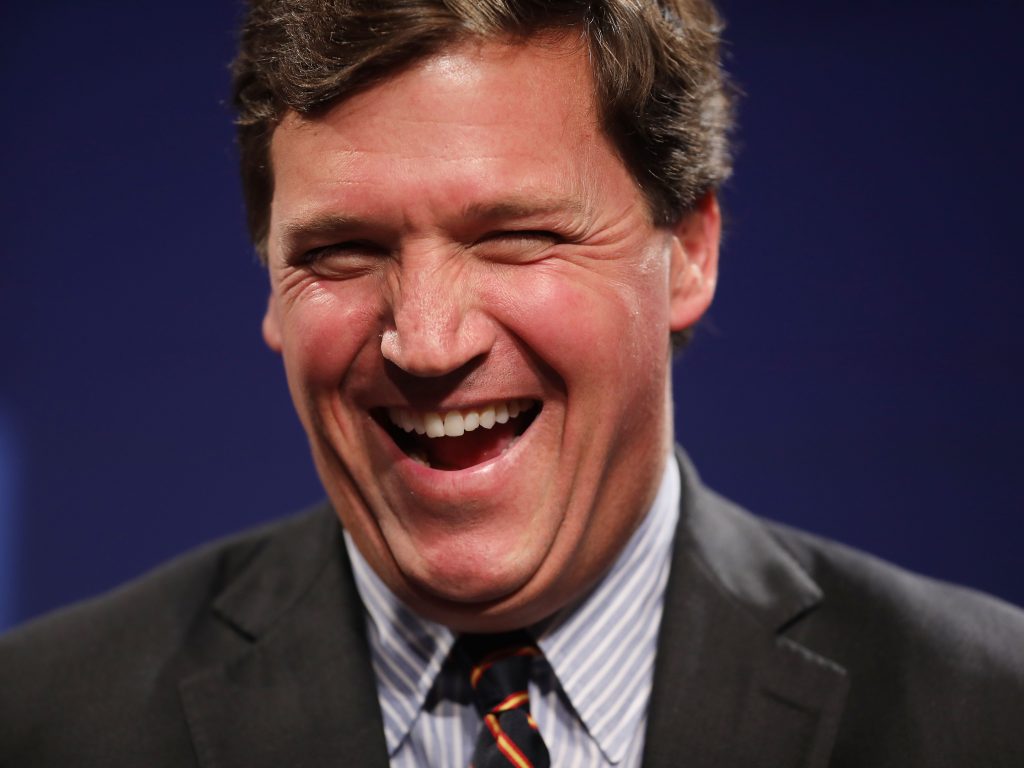- Tucker Carlson hosted a personal trainer who said red light therapy could increase testosterone levels in men.
- Few human studies have shown a link between red light and testosterone, and the studies that do exist have small sample sizes.
- "There's absolutely no controlled study that proves that," urologist Marc Goldstein told Inverse.
Fox News pundit Tucker Carlson went viral on Sunday after interviewing a personal trainer who claims red light therapy can raise testosterone levels in men, despite little evidence backing his statement.
Andrew McGovern, a certified personal trainer at LifeTime Fitness in Columbus, Ohio, appeared on Carlson's show on Sunday to claim exposure to red light therapy can raise testosterone levels in men.
"I was recently exposed to a term called 'bromeopathy' and I think there's a lot of people out there that don't trust the mainstream information," McGovern said.
—Ron Filipkowski 🇺🇦 (@RonFilipkowski) April 17, 2022
Earlier in the show, Carlson promoted a trailer for his new documentary "The End of Men" which covers what he described as the "total collapse" of testosterone levels in men.
Concerns about potentially decreasing testosterone levels have been around for years. However, some experts have cast doubts on that science, and the fears that sperm counts are plummeting, threatening male fertility.
Carlson told his guest he believes testosterone levels are dropping, and supports people trying red light therapy on their testicles. "Why wouldn't open-minded people seek new solutions?" Carlson asked Kid Rock, who appeared on the show after McGovern.
According to one urologist, the answer to that question is: there are many reasons.
Scant research exists showing a relationship between red light and increased testosterone
Some animal studies have found an increase in testosterone after using low-level laser therapy.
Low-level laser therapy using a 670-nm diode laser appeared to increase testosterone in rats, according to a 2013 study performed in Korea and published in Journal of Biomedical Research. This study suggests red light therapy could influence leydig cells found in the testes that release a class of hormones called androgens, which includes tesosterone. However, rat and human hormone levels do not act the same.
Few human studies demonstrate this relationship. A 2013 study in Lasers in Medical Science found semen specimen taken from patients with low sperm mobility could improve progressive motility using a low-level 830-nm diode laser, but the results depend on the laser density and post-exposure time.
"You know how many men's health formulas are out there that purport to increase testosterone levels, increase your energy levels, and increase erections?" Dr. Marc Goldstein, a urologist at Weill Cornell and the Director of Male Reproductive Medicine and Fertility, told Inverse. "There's absolutely no controlled study that proves that."
"And almost all the studies that purport to improvement — whether it's light therapy or the multitude of men's products out there — not a single one has any convincing scientific evidence or properly done studies."
The lack of evidence has not stopped the wellness industry on cashing in on red light therapy, with spas offering red-light therapy sessions for around $30 to $60 per session, and at-home devices selling for hundreds (and sometimes even thousands) of dollars.

